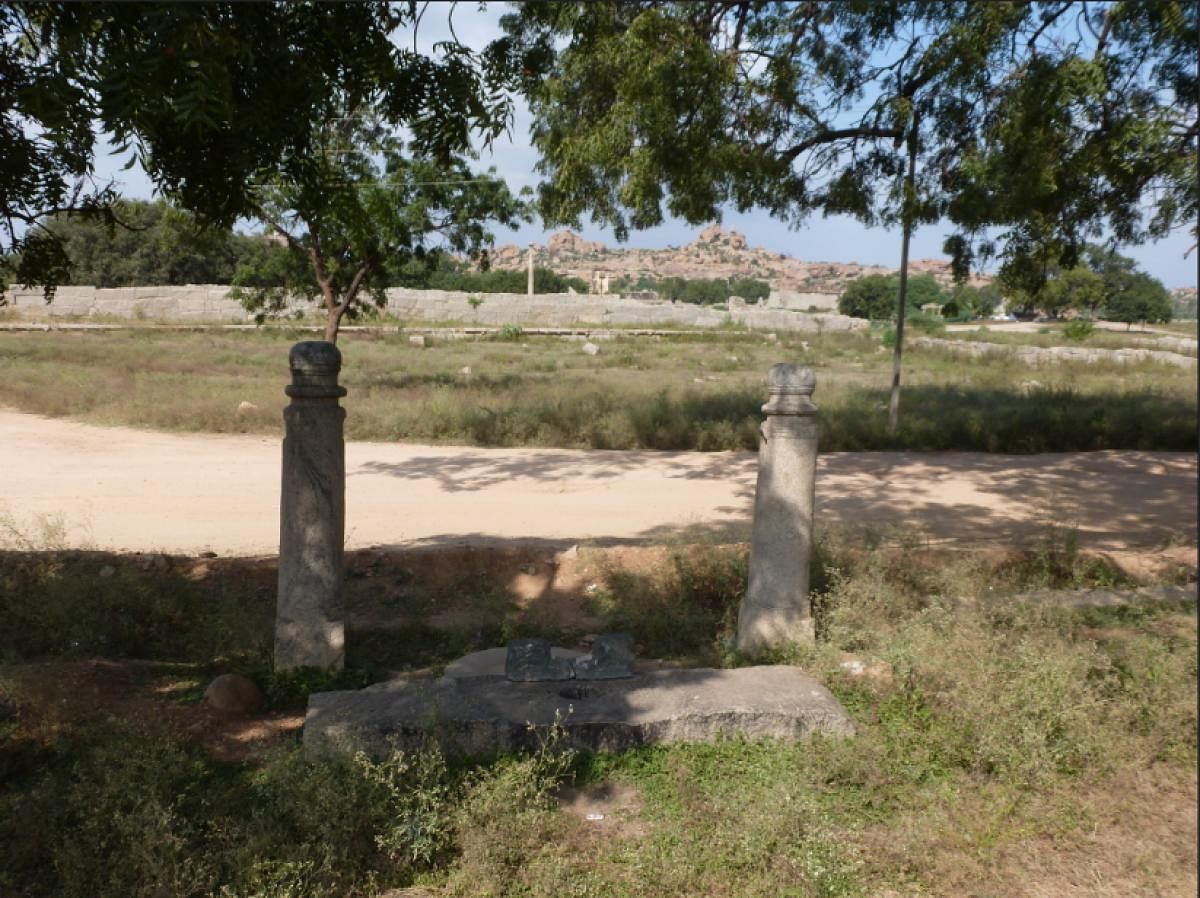Two stone pillars and a justice system

Despite living on the periphery of Hampi for over three years and making umpteen trips to the iconic landscape, I am yet to comprehend the intricacies of this place.
On every visit, you discover one relic or the other in this capital city of the Vijayanagar empire that piques your curiosity. One such antiquity is what is considered a flogging post, which comprises two stone pillars with enormous holes below the crown — meant to secure the victims.
Jayaram, a local guide well-versed in the history and topography of the ruined town, explains that these pillars symbolise a crude display of punishment adopted in the days of the Vijayanagar kings. In those days, as per oral history, prisoners were brought here with their hands tied, and were flogged in public. Blows were administered with a whip and usually directed to a person’s back. The offenders stood on a stone platform placed between the two posts, secured with straps, before being subjected to the punishment.
The pillars with rounded ornamental tops and square bases measure around six feet in height and are made of solid granite, available in plenty in the Deccan. Time has taken a toll on the right post, which is somewhat tilted. The relic may well have escaped our notice if the guide had not directed us towards it.
Various books detailing the history of the Vijayanagar empire, list the manner in which justice was provided. The king was the highest court of appeal, but he could not afford to hear every case. There was an officer called Dandanayaka who heard essential arguments.
The Pradhani was overall in-charge of administering justice, we may call him the chief justice. There were courts in the provinces presided over by kings’ agents or governors. There were village caste courts, presided over by caste elders; courts led by temple trustees and courts of the guilds presided over by their leaders. These courts decided civil and criminal cases, but in such cases, the king could consider an appeal.
The rulers subjected those found guilty of offences to harsh sentences that included fines, mutilation, imprisonment and even death. Books on the Viyanagara dynasty indicate that King Krishnadeva Raya was in favour of giving convicts on death row a chance to appeal for mercy thrice.
The rulers adopted a proper yardstick for determining the level of fine for an offence committed. The harsh punishments — the very mention of which might give today’s hardcore criminals the shivers — were supposed to eradicate evil and act as a deterrent to others.
Deccan Herald is on WhatsApp Channels| Join now for Breaking News & Editor's Picks